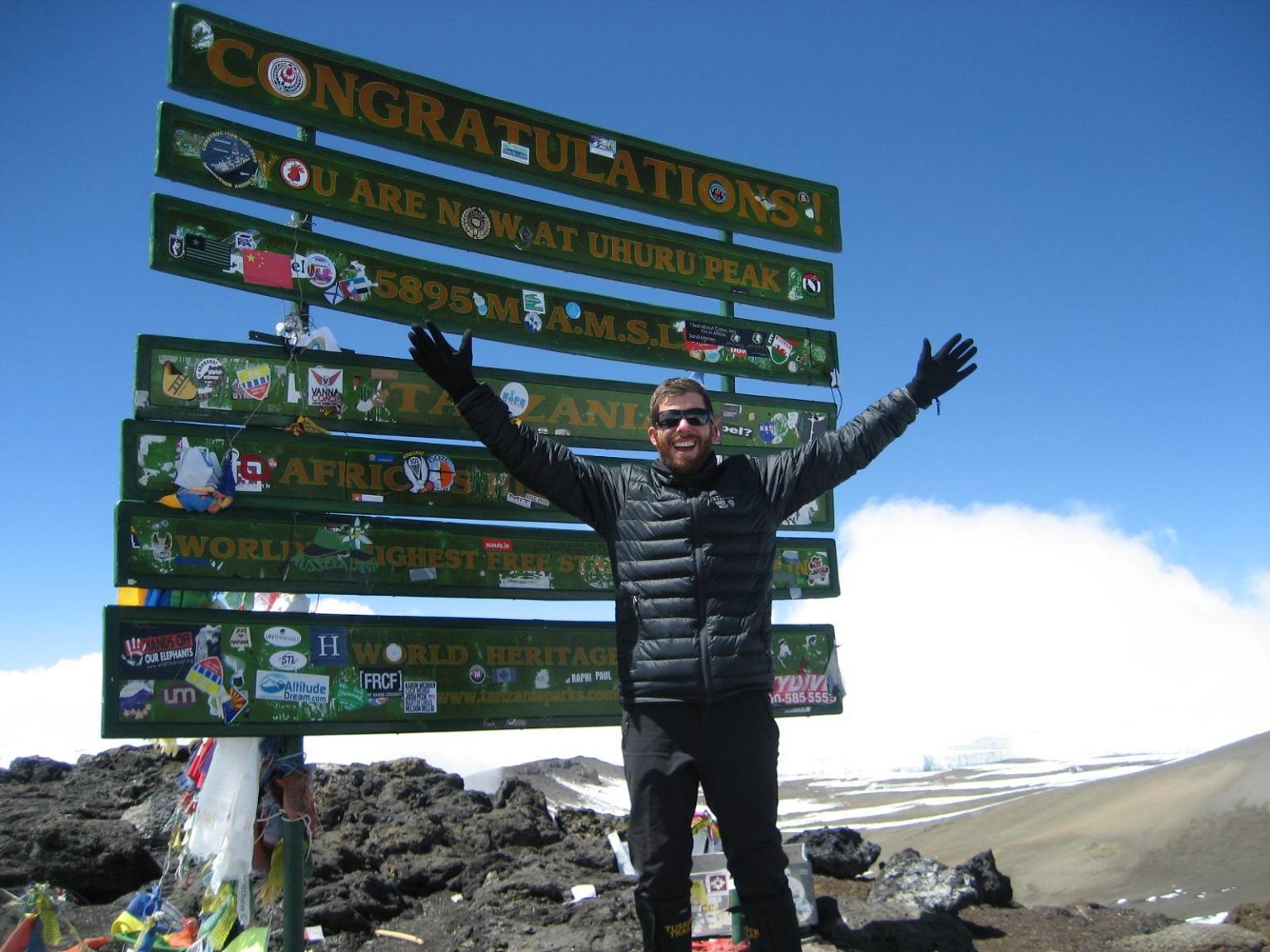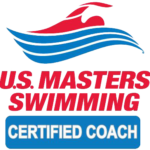by Chip Wedgeworth
Four months ago I set out to find an adventure. I had accrued ample vacation days and had the urge to travel off the beaten path. The thought of resorting to some quite beach resort bored me to death; I wanted something intense, something different. My research pointed me to only one option: Mount Kilimanjaro in Tanzania, Africa. This decision came despite the fact that I have no real experience camping or hiking, little to no existing gear, and more obviously, I was not in any sort of aerobic shape.The internet has an overwhelming amount of information on climbing Kilimanjaro. I read for days on end countless blogs covering am array of amazing mountain top experiences plus the depths of tragic tails of failure and misery. All seemed to have their approach, their strategy to get to the summit. There are well over 100 guide companies that operate on Kilimanjaro with most featuring seven unique ascent routes to the summit ranging anywhere from five to ten days in trip length. There are also varying opinions on the best time to go. The mountain is accessible year round, but each month has varying conditions with respect to temperature, precipitation, cloudiness, and of course, crowds. Each month seemed to have a comparative advantage over the prior. The same pattern existed as well on how to physically prepare and what gear is essential. It is then no surprise that when my internet search concluded with respect to all things Kilimanjaro, I was frozen, paralyzed with data overload. Because options always vary, I focused on the following facts to guide my decisions:
•Mount Kilimanjaro is tallest free standing mountain in the world at 19,340 ft.
•An estimated 20,000 climb Kilimanjaro annually with success rate of 66%
•Altitude and weather are the two most common impediments. You never know how your body will handle high altitude. Weather patterns are also unpredictable. The temperatures in the climb can range from 90 degrees in the first couple days to -30 degrees near the summit.
Committing to the Climb
In order for this adventure to be real, it needed to be booked. The park requires that every climber have A registered guide company leading the expedition. I decided on the factors below that were most important to me in my selection process:
•Safety Record
•Summit Success Rate
•Operational Excellence
•Porter Welfare
•Price
The above criteria made the selection process much less daunting. After talking with representatives from several companies I confidently selected Tusker Trails, an American company that differentiates themselves in the marketplace by having High Altitude First Responder (HAFR) guides along with essential medical equipment and defined emergency processes and protocols. After conferring with Tusker, I choose the seven day Lemosho route, which has the highest percentage of summit success. This particular route includes an extra day for altitude acclimatization as it traverses across the mountain before attempting the summit. By the end of October I had authorized my deposit with Tusker Trails, officially committing that I would be attempting the summit on the morning of January 23rd!
Preparing for Climb
The exhilaration of the imminence of climb quickly turned to panic with the realization that I had a little bit over two months to prepare for what would be no doubt the most physically challenging endeavor I have ever pursued. This premonition was heightened as I was forewarned that my chosen Lemosho route deploys a “hike high and sleep slow” acclimatization strategy that puts an extra emphasis on physical preparedness as it is one of the more strenuous routes. As I had progressed into adulthood, I had slowly transitioned from playing sports to watching sports. I came to the conclusion that my sedentary lifestyle was by no means capable of handling the task of Kilimanjaro preparation. I needed help.
I have known Kelly and Meghan since high school and they have been great friends as I moved to Charlotte in 2011. Without much hesitation, I reached out to Fillnow Coaching. I knew that I needed to get insanely fit in a short amount of time. Kelly was a friend that I trusted, bus just as importantly, she had a track record of proven coaching success. Preparing to climb a mountain couldn’t be much different.
Kelly developed a customized 75 day training plan with stamina and endurance goals that accommodated my crazy work travel schedule. The cross training approach assured that no two workouts were the same. The plan incorporated day hikes, varied runs and walks, spin classes, the stair climber and elliptical, numerous lower body strength exercises, dynamic stretching exercises and much more. Kelly constantly fine-tuned to my every changing travel schedule and plan progress. All workouts were systematically logged online and tracked with summary heart rate data. The plan would have been of little value if it was not accompanied with accountability. Rarely a day went by without an email or text from Kelly with a message encouraging me on my progress or reminding me of my goals. Time flew by and before I knew the climb was upon me. I worked extremely hard for two and half months and was in great shape. Kelly last admonition to me was to enjoy the journey.
The Climb
As I started up the mountain, there was nagging thought of doubt or fear of failure. I had to constantly remind myself that I had done everything in my power to properly prepare for success and now it was time to enjoy the journey. I was climbing alongside great guides, I was in great physical shape, and I had been to every REI in the state of North Carolina to ensure I had all the essential gear and swag.
The climb started in the rainforest (7,700ft) full of colobus and blue monkeys. After two days we progressed to the heather and moorland zone (12,000ft) where the vegetation gets sparse before entering the alpine dessert (15,000ft) for days five and six. The first six days consistently were 5-8 hours of hiking. Weather was not ideal, we encountered multiple days of rain, some hail, and one day of snow. Temperatures were moderate while hiking and below freezing every night. Our hiking strategy was always the same:
•Climb high, sleep low.
•Hike slow. Our porters and guides constantly chirped “Pole, Pole” which is Swahili for slowly, slowly.
•Always hydrate. Target 5 liters of water a day.
•Nutrition is paramount. Altitude diminishes appetite. Eat something every hour, even if you are not hungry.
Twice daily my oxygen saturation percentage and pulse were checked along with my lungs for fluid (high altitude pulmonary edema). I started with 98% oxygen saturation and resting heart rate of 72 bpm. After six days on the mountain, we had reached Barufu base camp under the summit. My oxygen saturation hovered around 82% with a resting pulse of 100 bpm.
We made our final push to the summit during the frozen wee hours of January 23rd! It took a grueling 7 hour vertical climb to reach Stella Point, which is 90 minutes from the summit of Uhuru Peak. A combination of mild sleep deprivation and the continually thinning air of the ascent made every movement a challenge. The final day was much more difficult than any climber on our team anticipated. The weather cleared and we stopped for a short lunch at Stella Point. The final segment was the most difficult and most beautiful. We hiked along the shrinking Furtwangler Glacier taking in views on the African plains on all sides. Fighting dizziness and fatigue, I summited along with the whole expedition team at 2:30pm! We were able to spend 30 minutes at the peak celebrating and taking pictures before heading down. My oxygen stats were checked once more at the summit, an astounding 73%. The other four climbers on my team had similar stats, even some in the low 60% range. Most hospitals put patients on oxygen if their saturation percentage dips below 90%. Fortunately, our most serious symptoms were pounding headaches and nausea, but nothing too serious to prevent anyone from the summit.
It took only two days to descend to town of Moshi where I showered first, then toasted beers with my four fellow climbers. We smiled as we saw new arrivals walking around town, knowing that they did not yet know what was in store for them.
As I write this blog, I am one month removed from the start of the climb. There are no words to fully describe the experience. A majority of the time spent on the mountain was not enjoyable. It was grueling, but It was rewarding. An accomplishment that I did not achieve alone. I was dependent on the support from Fillnow Coaching as well as the porters that carried the teams gear. I was dependent on the countless friends and family who gave me endless support and encouragement that fueled my confidence to take the challenge to pursue a goal that was outside my comfort zone. Those who came alongside me for this journey contributed to an incredible life experience for me, one in which I had determined the goal, risen to the challenge both physically and mentally and reached the pinnacle. I now know that the summit represented a zillion little victories along the way since that October day when I set my sites on the journey up Kilimanjaro.








